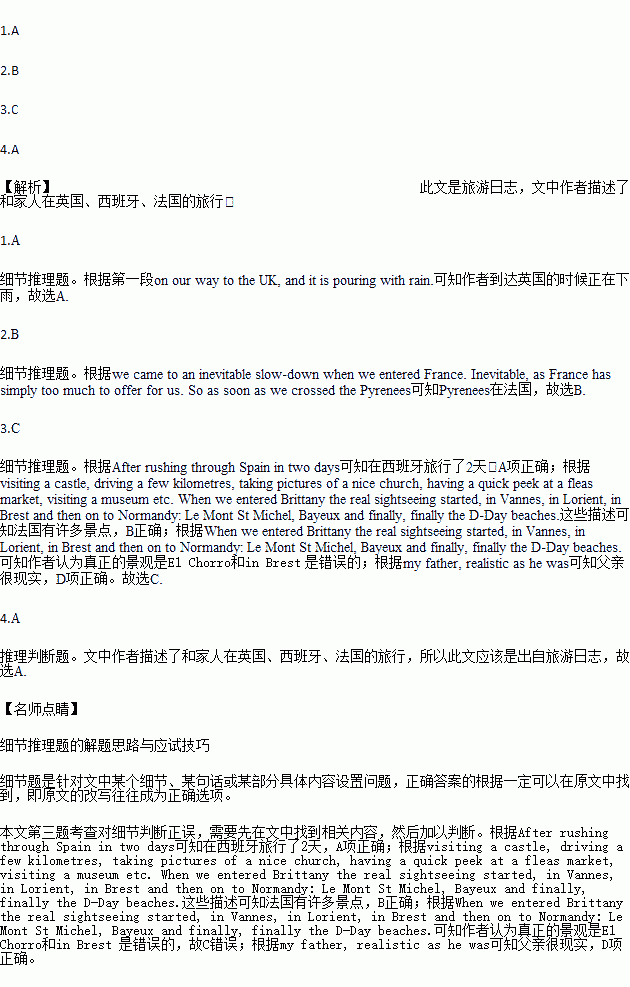题目内容
Saturday, 22 April , 2017

We are currently on a camp-site near Calais, on our way to the UK, and it is pouring with rain. As if gods want to prepare us for the UK at all costs. As if we don't know what rain is... Our ferry to the green isles will leave tomorrow at 10.30 and despite the rain, I am really looking forward to it.
It has taken us a while to get here, as we already left El Chorro on 4 April. After rushing through Spain in two days, however, we came to an inevitable slow-down when we entered France. Inevitable, as France has simply too much to offer for us. So as soon as we crossed the Pyrenees, our driving sequence became something like driving a few kilometres, visiting a castle, driving a few kilometres, taking pictures of a nice church, driving a few kilometres, having a quick peek at a fleas market, driving a few kilometres, visiting a museum etc. When we entered Brittany the real sightseeing started, in Vannes, in Lorient, in Brest and then on to Normandy: Le Mont St Michel, Bayeux and finally, finally the D-Day beaches. I always wanted to visit these, for obvious reasons I would say, but my father, realistic as he was, calculated the chances that it would rain a considerable amount of days of a three-week holiday and always decided against it. But a few days ago I finally stepped onto Gold Beach (where the Brits landed) and I was greeted by the Norman sun. A beautiful day.
1.It was _____ when the writer was on his way to the UK.
A. pouring B. foggy
C. snowy D. sunny
2.According to the passage, the Pyrenees must be a place in_____.
A. Spain B. France
C. Netherland D. Normandy
3.Which of the following statement is NOT true?
A. They spent 2 days in Spain traveling.
B. The writer thought France has a lot of places to visit.
C. The writer thought the real sightseeing was in E1 Chorro, and in Brest.
D. The writer’s father was a realistic person.
4.The passage probably comes from _______.
A. a travel journal B. a science fiction
C. a news report D. a film review


 film & television production to working within the network & studio systems. Combining their knowledge, along with numerous good industry professionals that make up the Advisory Board, they are introducing a one?of?a?kind festival experience.
film & television production to working within the network & studio systems. Combining their knowledge, along with numerous good industry professionals that make up the Advisory Board, they are introducing a one?of?a?kind festival experience. uestion quiz.
uestion quiz. s to establish their social dominance (统治力)over those in their grasp.
s to establish their social dominance (统治力)over those in their grasp.